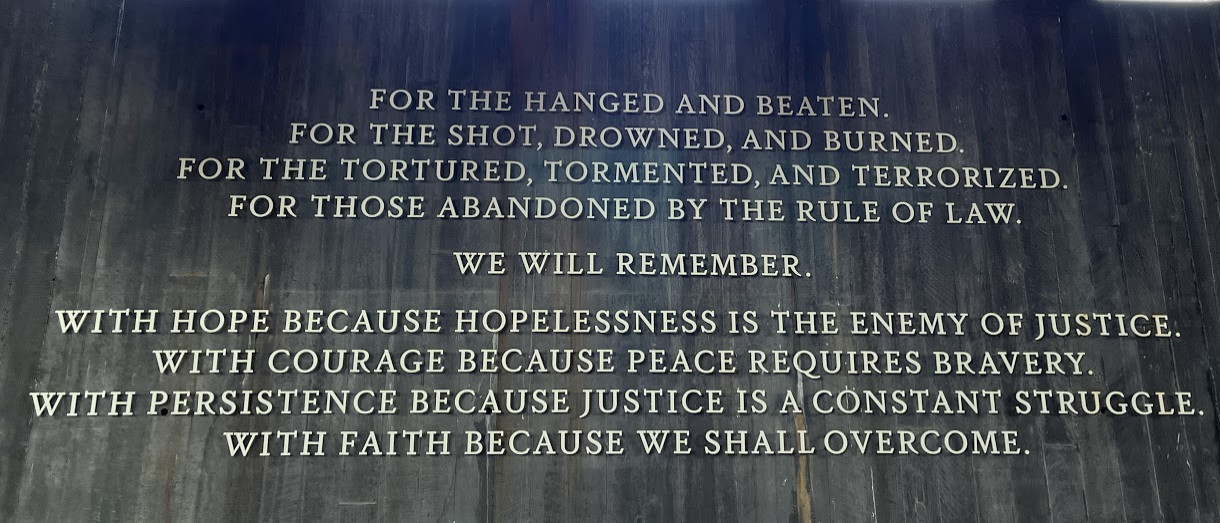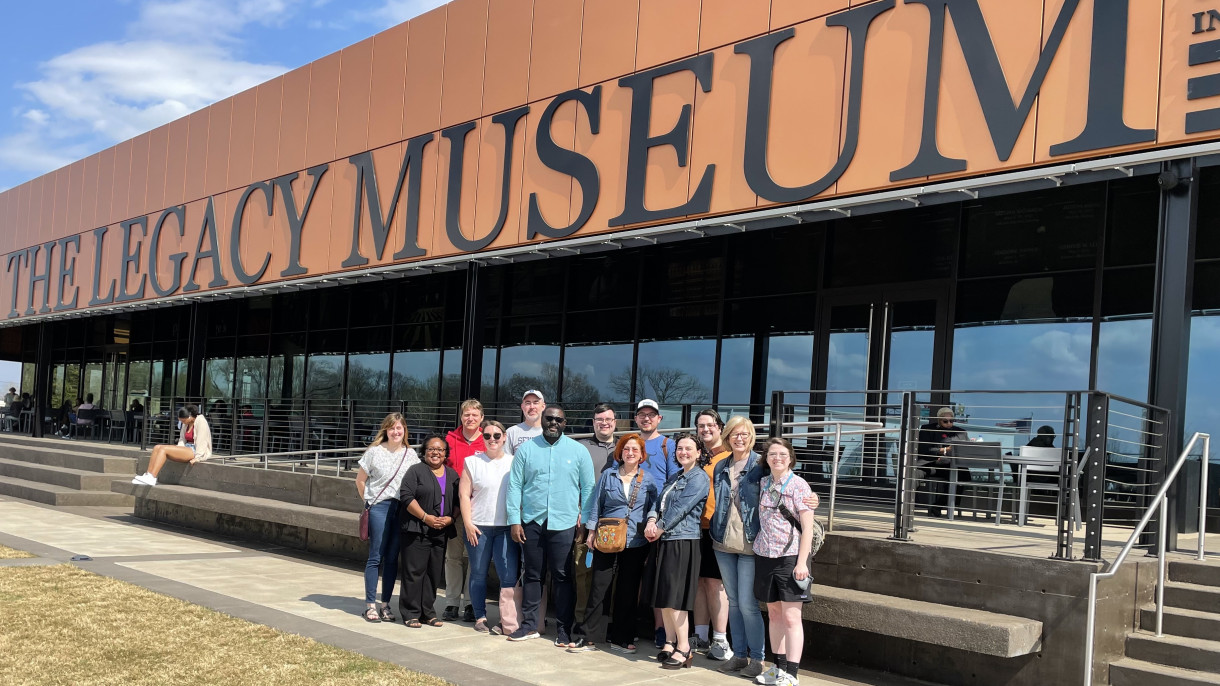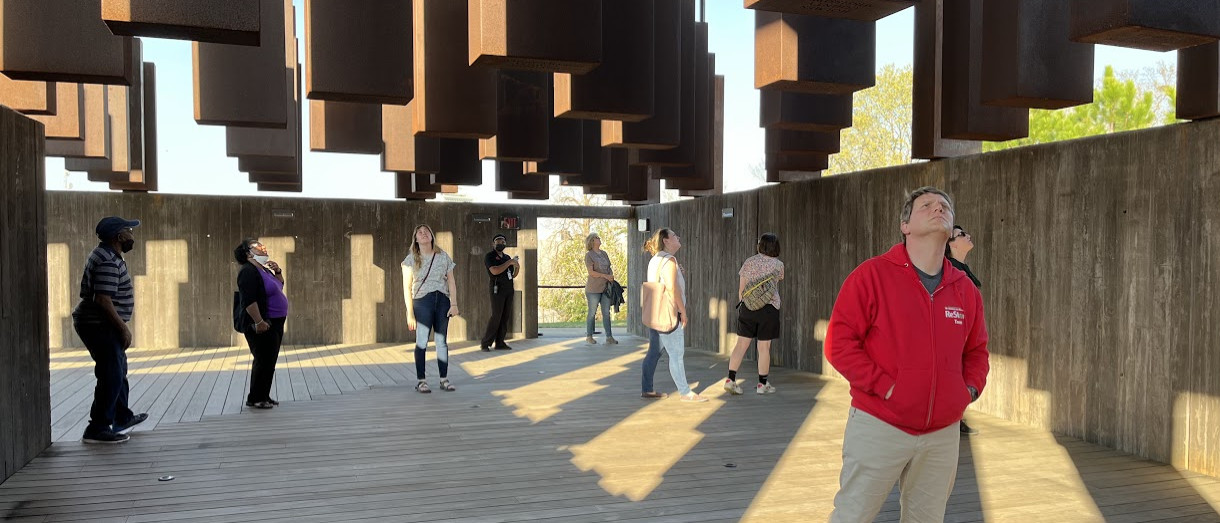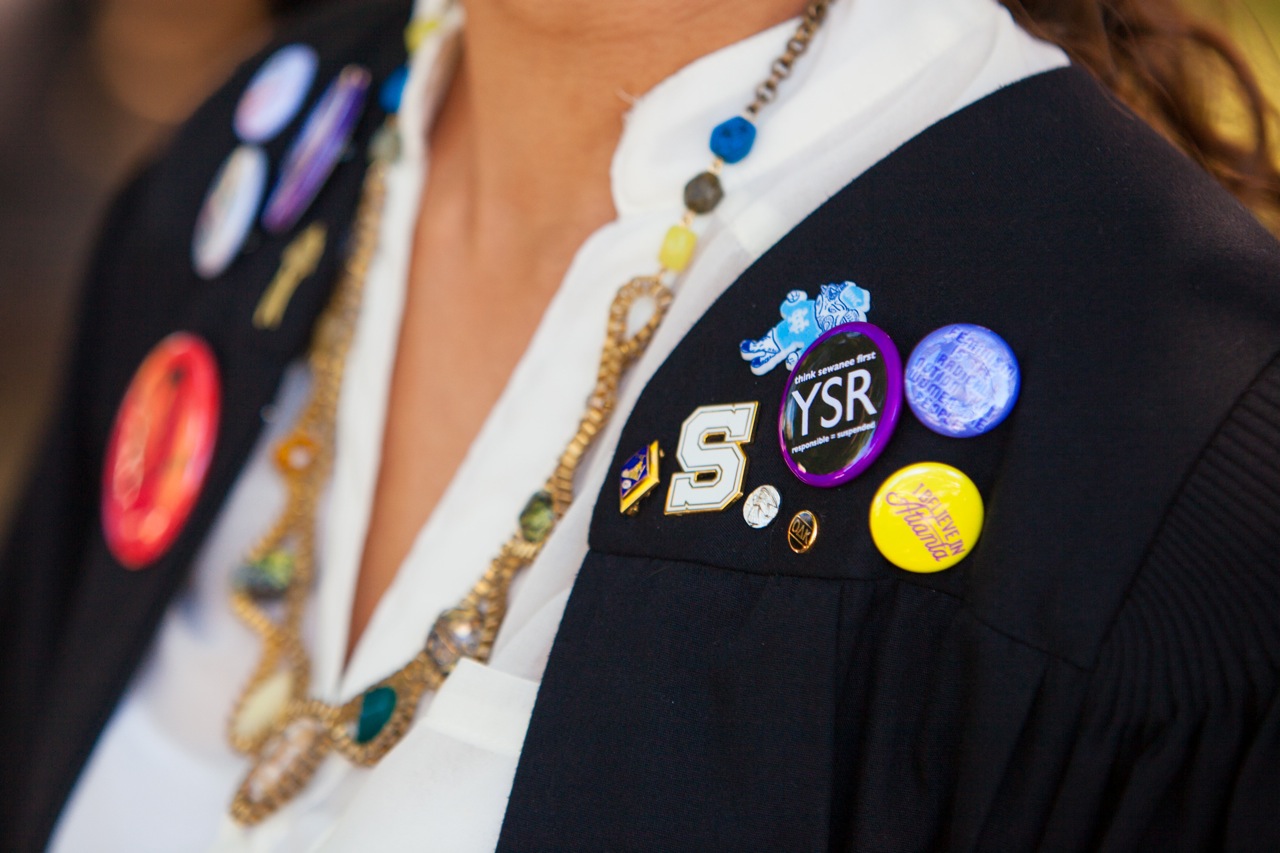The School of Theology Visits Historical Center of Racial Injustice

On Saturday March 5, a group of seminarians and faculty from the School of Theology made a pilgrimage to the Legacy Museum and to the Memorial for Justice and Peace in Montgomery, Alabama. The purpose of the trip was to learn a fuller story of American civil and religious history and to gain a deeper understanding of how the racialized trauma of slavery, Jim Crow, lynching, and mass incarceration affect ministry today.
The visit to Montgomery was part of the Rev. Dr. David Stark’s elective course “Memory and Preaching: Engaging Place with Eucharistic Hope.” The course examines how monuments preach, how place and memory affect what can be said, and what needs to be said. Course work also explores the opportunity preaching presents to interpret space, advocate for change, and foster Beloved Community rooted in holy memory. Stark’s hope for the pilgrimage was that students would be both challenged and inspired. “I can see that they were,” says Stark when asked about the impact of the trip on students.

The travelers included 13 seminary students, the Rev. Dr. Deborah Jackson, the associate dean for community life, and her spouse, and trip organizer and leader, Stark. The group visited a number of sites in Montgomery including the Legacy Museum, the National Memorial for Peace and Justice, and Dexter Avenue Baptist Church —the first church Martin Luther King, Jr. served and an important gathering place for the Montgomery Bus Boycott. Notably, just down the hill from the church is the Court Square Fountain, which was surrounded by one of America’s most prominent slave trades.
This School of Theology pilgrimage also coincided with the commemoration of the 57th anniversary of Bloody Sunday and the Selma-to-Montgomery march, at which both Vice President Kamala Harris and the Rev. Jesse Jackson spoke. Though coincidental, the presence of national leaders during the pilgrimage emphasized Montgomery as a place of past and present significance, as America grapples anew with issues of race and reconciliation. With the 2018 addition of the Legacy Museum and the National Memorial for Peace and Justice, Montgomery is also now a place of truth telling, learning, reflection, hope, and pilgrimage.
When asked about his experiences on the pilgrimage, Casey Anderson, T’23, says, “It was probably one of the most life-changing experiences yet,” before describing in detail several of the Legacy Museum’s vivid multimedia exhibits. These included interactions with African American prisoners, played by actors and a room-sized video depiction of travel over rough seas, emulating the voyage of kidnapped Africans brought by ship to North America. Both the museum and the memorial emphasize the culture, practice, and devastating impact of lynching with powerful and disturbing exhibits. Anderson recalls being moved to tears at points and weeks later clearly knows how the pilgrimage changed him, “The pilgrimage taught me to be unafraid in naming the brokenness in humanity. Now I cannot be content with my sermons if they fail to shed light on the pain and hate we inflict upon others.”

For Shari Harrison, T’22, the experience had a weighty impact, as well. Harrison relays how being present in the museum created an opportunity for an unlikely encounter. Harrison, who is white, was approached by an African American woman and unexpectedly asked why she was there. Harrison explained that she is studying to become an Episcopal priest and a long exchange ensued. The two women spoke about many things including current efforts to ignore history, suppress voting access and fair elections, alarming Supreme Court rulings, and race relations today. “We agreed on just about everything. It was very meaningful,” says Harrison of the conversation. “Overall the experience of the museum and the memorial has helped change my world view, especially the way I interpret news media and the way I interact with others.”
It is precisely for interactions around race that Stark seeks to prepare his students. Convinced today’s clergy will encounter the conflict of racial injustice in their pastoral work, Stark emphasizes the importance of equipping students to lead in this climate. The foundation includes a deep understanding of a brutal and protracted history and its lasting consequences, skills to address apparent and veiled conflict, and an ability to anticipate and prepare for what lies ahead.
“For our students, it’s not a question of if, it’s a matter of when,” states Dr. Stark emphatically. “In congregations and in the wider community our students will be confronted with deep divides about how we narrate history, respond to racial injustice, and understand the Gospel's connection to this work. It is my hope that this class contributes to the School of Theology's formation of Church leaders who are adept at navigating these divides in faithful and transformative ways."
End Note: The School of Theology pilgrimage to the Legacy Museum and the Memorial for Peace and Justice was made possible by a grant from the Center for Teaching at the University of the South and funding from the School of Theology.
